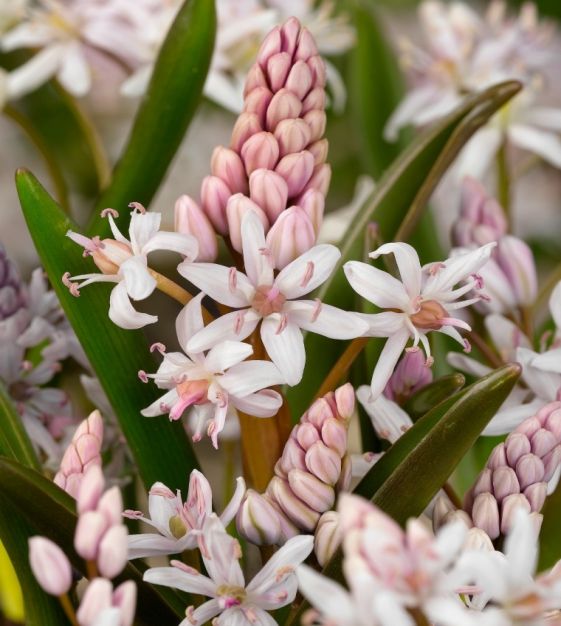-
- Discounted Collections
- 20%-Off Website Specials
- New for 2024!
- Tulips
- Narcissi
- Allium
- Anemone blanda
- Brodiaea
- Camassia
- Chionodoxa
- Corydalis
- Crocus
- Eranthis
- Eremurus
- Erythronium
- Fritillaria
- Galanthus
- Geranium
- Gladiolus
- Hyacinths
- Hyacinthoides
- Ipheion uniflorum
- Dutch Iris
- Rock Garden Iris
- Ixiolirion
- Leucojum aestivum
- Muscari
- Ornithogalum
- Oxalis
- Puschkinia
- Scilla
- Lilies
- Peonies
- Amaryllis
- Paperwhites
- Tender Bulbs
- Anemone Giants
- Tecolote Ranunculus
- Freesias
Scilla bifolia rosea
Also known as Scilla bifolia carnea or the Alpine Squill, this lightly scented 17th century naturalizer has trusses of star-shaped light pink florets and strappy foliage. It’s a lovely addition to rock gardens, woodlands and garden borders. Generally referred to as Wood Squill, deer- and rodent-resistant Scilla naturalize readily in areas of light shade or dappled sunlight. When it’s really happy where planted, it can naturalize by both bulb offsets (baby bulbs on the sides of the mother bulb you’ve planted) and self-sowing seed. You’ll need about nine bulbs per square foot. (Square footage is determined multiplying the planting site’s length times its width.) In woodland settings, you can also scatter-plant the bulbs for a more natural look.
Bulb size: 5 cm/up. Full to partial sunlight. Bloom time in horticultural zone 5: early spring. Plant 5" deep and 4" to 6" apart. HZ: 4-8. Height: 4" to 5". (Scilla are also good for forcing indoors over the winter. Pot them up in mid-October and precool them at a consistent, dark 38° to 45°F for six to eight weeks with moderate watering. Bring them into the house~they will bloom about two to four weeks later.)
Scilla are The Art & Soul of Spring.
Scilla Horticultural Tips Stinze Plantings
Scilla are The Art & Soul of Spring.
Scilla Horticultural Tips Stinze Plantings





